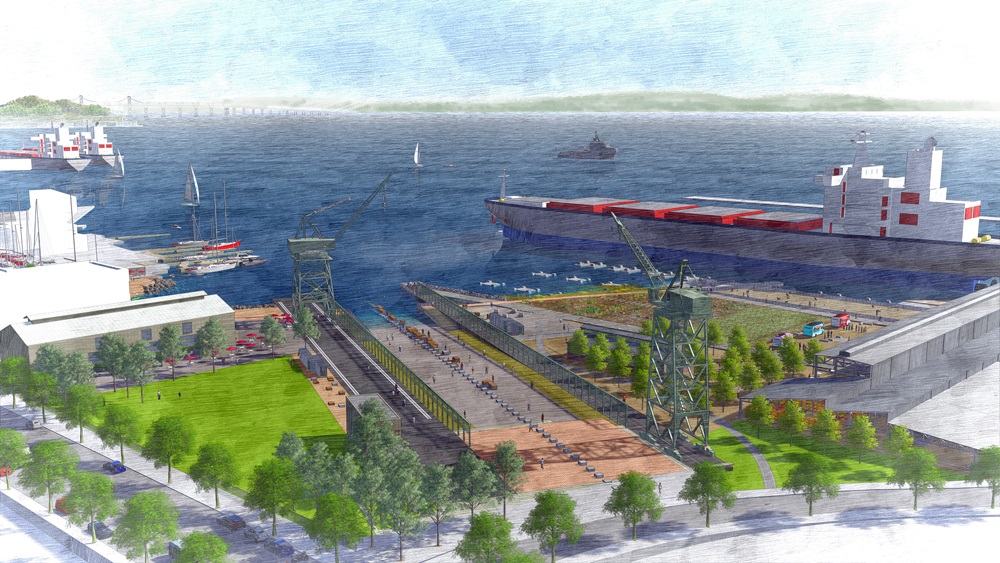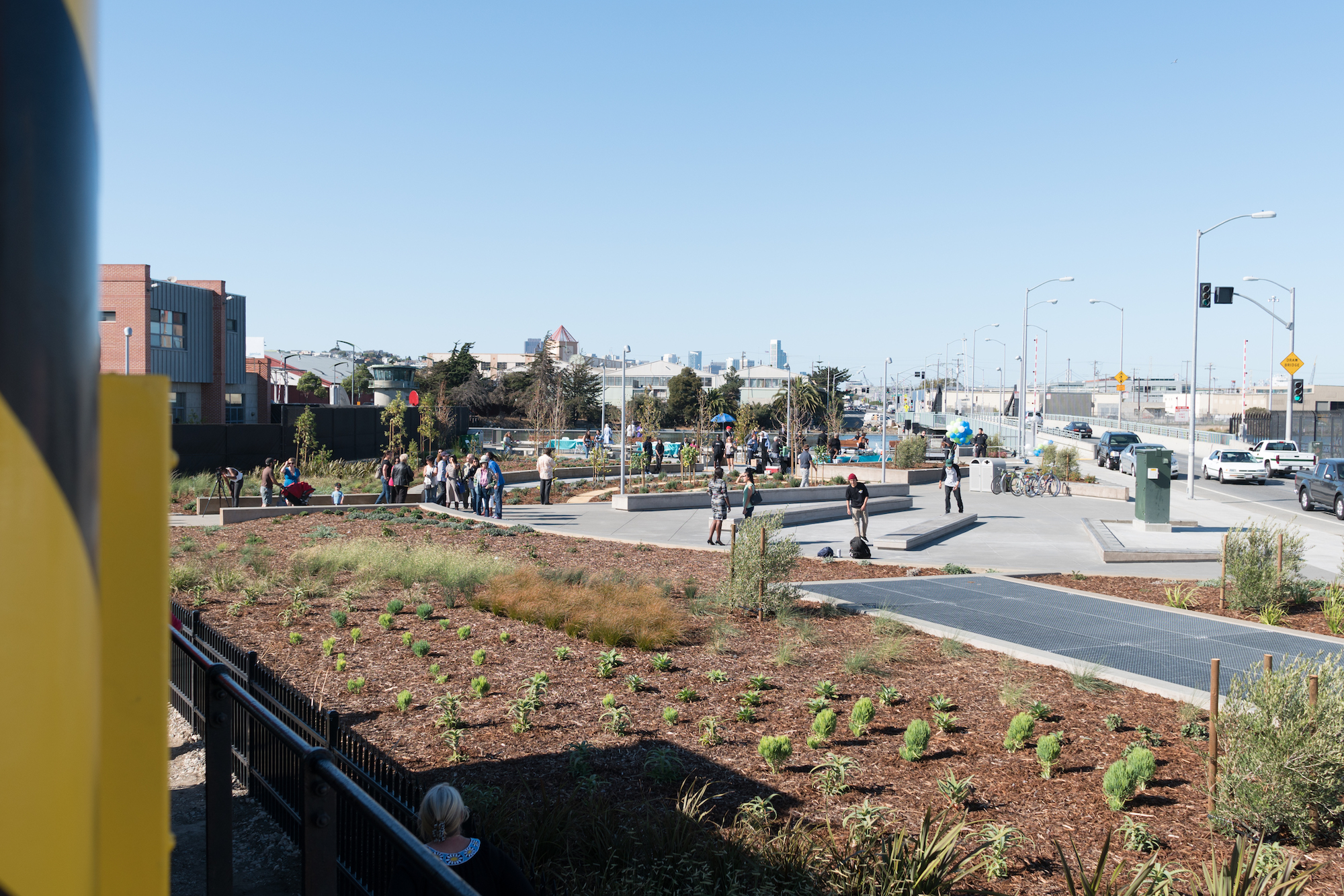Economic + Neighborhood Development Accomplishments
Port of San Francisco
Awarded the first contract for the Crane Cove Park Project Phase 1, a nine-acre project which will include preservation of the historic ship building slip-way and two historic cranes, a variety of landscape and plaza areas, and 1,000 feet of Bay shoreline open to the public.
Completed the Bayview Gateway, a one-acre green open space located at Third Street and Cargo Way near Pier 90 to serve as an entryway to the Bayview neighborhood. This passive open space with drought-tolerant plants and fruit-bearing trees was designed to reflect the natural and cultural history of the neighborhood and to be compatible with the Port’s cargo and maritime industrial operations.
Executed a lease for the 20th Street Historic Buildings Rehabilitation Project with Orton Development that will include a total investment in these previously backlogged, unfunded buildings, and established the first Port Infrastructure Financing District (IFD) as the first step in the Pier 70 Historic Core Rehabilitation Plan.
Repaired the Pier 35 Bulkhead Building, upgrading two elevators and completing essential water intrusion work in several areas in the Pier 35 bulkhead and shed buildings. Pier 35 is a historic building and serves as the Port’s secondary cruise terminal with office tenants in the bulkhead building.


Major Expansion Projects
Hunters Point Shipyard/Candlestick Point: Completed nearly all of the horizontal development of the Hilltop area and 208 (of the 898) housing units are complete; in addition, the Alice Griffith Project, which will include 122 units of replacement and affordable housing, will be complete in early 2017.
Mission Bay: Constructed 4,795 housing units, including 822 affordable units and more than 1.9 million square feet of commercial, office, clinical, and biotechnology lab space with another 1 million square feet under construction; in addition, 60% of the UCSF campus has been developed including the first phase of the UCSF medical center, and more than 10 acres of new non-UCSF parks have been completed.
Transbay Transit Center: Constructed or currently constructing over 2.1 million square feet of office and 1,812 residential units, including 569 affordable units.
Treasure Island: Completed the first and second transfers of property from the Navy to TIDA and the first transfer of building development parcels from TIDA to the Treasure Island Community Development (TICD), and began the demolition of existing structures in the initial areas of development.
Neighborhood Development
Eastern Neighborhoods: Constructed improvements on Bartlett Street between 21st and 22nd Streets, completed a new park in Showplace Square, and will complete construction on a new park at 17th and Folsom Streets in early 2017.
Market/Octavia: Completed the Hayes Street two-way project, which included the Central Freeway dog park, skate park, and McCoppin Hub Plaza, as well as pedestrian crossing enhancements along Franklin and Gough Streets.
Balboa Park: Extended the Lee Avenue and Brighton Avenue Public Access Easement, which enables pedestrian access from Ocean Avenue to future development on the Balboa Reservoir site.
Rincon Hill: Completed design on Guy Place Park; the first phase of streetscape improvements along Harrison Street will be designed in 2017. Both projects are projected to begin construction in 2017.
Created new guidelines in collaboration with the Human Services Agency (HSA) that outline a new RFP process to select child care projects that add care capacity. These projects will be funded through impact fee revenue, and HSA has issued a Notice of Funding Availability (NOFA) for child care centers within the Market/Octavia area.
Initiated two community-based grant programs for the Eastern Neighborhoods and Market/ Octavia Plan areas, funded with impact fees.

